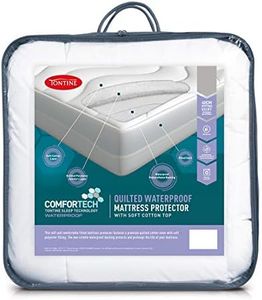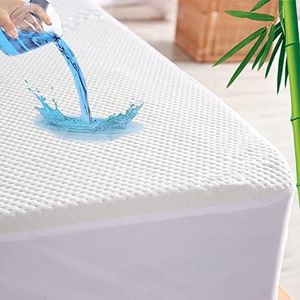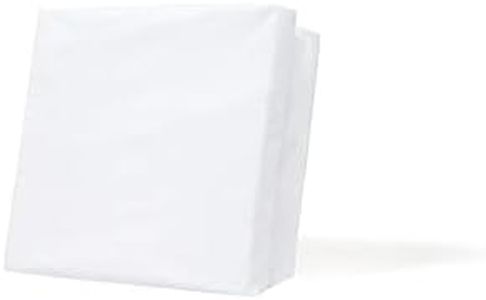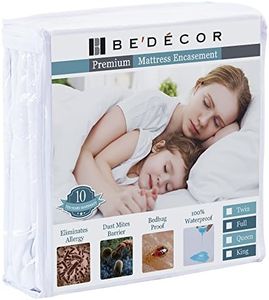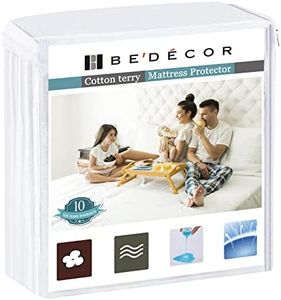We Use CookiesWe use cookies to enhance the security, performance,
functionality and for analytical and promotional activities. By continuing to browse this site you
are agreeing to our privacy policy
10 Best Mattress Protector
From leading brands and best sellers available on the web.Buying Guide for the Best Mattress Protector
Choosing a mattress protector may seem straightforward, but there are key factors that make a big difference in comfort, durability, and effectiveness. The main job of a mattress protector is to shield your mattress from spills, stains, dust mites, and allergens, helping to extend its life and maintain hygiene. When shopping for a mattress protector, you should balance protection, comfort, breathability, and ease of care. It’s important to understand your own needs—such as allergy issues, sensitivity to heat, and lifestyle habits—so you choose a protector that fits seamlessly with your sleeping environment.MaterialThe material of a mattress protector affects how it feels, performs, and lasts. Common materials include cotton, polyester, bamboo, and blends, sometimes with waterproof layers like polyurethane. Natural fibers like cotton or bamboo are soft, breathable, and good for sensitive skin, while synthetic ones may be more durable and affordable. If you tend to get hot at night or have sensitive skin, natural fibers are preferred. If you want extra waterproofing or allergen protection, look for synthetic blends or laminated styles.
WaterproofingWaterproof mattress protectors keep liquids from penetrating the surface and damaging your mattress. Some protectors are fully waterproof, with a thin layer of plastic or polyurethane, while others offer only minor moisture resistance. For households with young children, pets, or people who eat and drink in bed, full waterproofing is a priority. If spills are rare, and you want maximum breathability, a moisture-resistant protector without a full waterproof layer might be sufficient.
BreathabilityBreathability determines how well heat and moisture can move through the protector. Highly breathable protectors help with temperature regulation and prevent you from getting sweaty at night. Waterproof protectors sometimes trap heat, especially if made from non-breathable materials. If you sleep hot or live in a warm climate, prioritize protectors labeled as breathable or temperature-controlling, even if it means sacrificing bit of waterproofing.
Allergen ProtectionSome mattress protectors are made with tightly woven fabrics or special barriers to keep out dust mites, pet dander, and other allergens. These can be important for people with allergies or asthma. Not all mattress protectors provide this feature, so read labels for terms like 'allergen-proof' or 'encasement.' If you suffer from allergies, look for a design that fully encases the mattress or offers high filtration.
Fit and DepthMattress protectors come in different sizes and styles, such as fitted, elasticized, or zippered encasements. It’s essential that your protector fits your mattress snugly, especially if you have a thick or pillow-top mattress. Check the maximum depth listed (like 'fits mattresses up to 18 inches deep'). A loose or poorly-fitted protector can bunch up or slide, making your bed uncomfortable, so always measure your mattress thickness first and pick a protector designed for your bed’s size and depth.
Ease of CleaningSome mattress protectors are machine washable and dryable, while others require special care. Frequent washing is necessary, especially in homes with pets, children, or allergies. Check the care instructions before buying, and opt for a protector that can be easily washed and dried at home if routine cleaning is a priority for you.
NoiseSome waterproof or synthetic mattress protectors can be noisy and crinkly, which can disrupt your sleep. Modern protectors often focus on quieter designs. If you are a light sleeper or sensitive to noise, search for a protector described as 'noiseless' or 'silent' and, if possible, read reviews about sleeper comfort.
